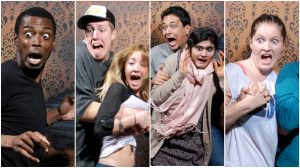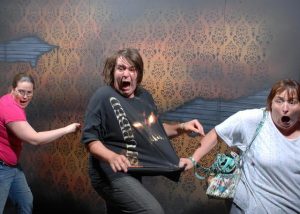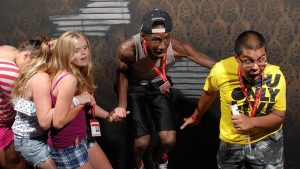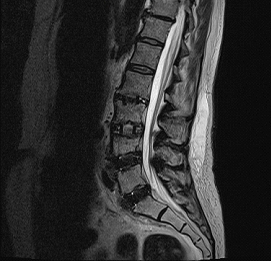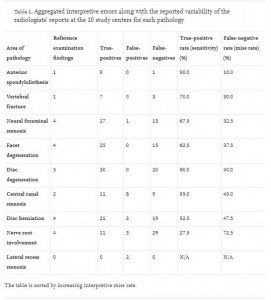From the show notes:
Join Industry Veteran Anthony Carey and Jason Stella Discuss…
1. Why he has spent the majority of your career working on how to help people decrease their pain.
2. Discuss his PRACTICAL book called: “The Pain-Free Program: A Proven Method to Relieve Back, Neck, Shoulder and Joint Pain.
3. WHAT have you found to be the best ways to help, staying within the scope of being a trainer?
4. Explain the following concepts in his book
1. The Body’s Interrelatedness
2. Our Self-Healing Bodies
3. The need to take responsibility
4. Anthony’s unique way of putting exercises is specific groups called Form & Category
– What’s the differences between them
– Show some of the exercises within each area and how they may be able to help specific people?
5. Explain and show your invention, The CORE-TEX.
a. Why and how did you come up with this?
b. Can you show us some of the common ways you use this to help clients improve
3. Explain the course that you put together called the “Pain Free Movement specialist
Archive for the ‘General public’ Category
How and Why a Function First Virtual Appointment Works
Tuesday, March 31st, 2020Did you know that we have been working with clients from around the world via video since the VHS days?! Today’s technology allows us to to communicate much faster AND you get a video record of your exercises!
The beauty of working this way is that you get to follow along a video, work at your own pace and keep a video archive of your exercises. Everything on the video is 100% personalized for you and recorded AFTER a face to face video consultation.
Many people have thought we would charge more for this appointment because of the extra time we put into filming your video. But we don’t. The price is the same as the in-person appointment.
You don’t require any special technical skills. We work via Skype, Facetime or Zoom.
Admittedly, there are advantages to in person appointments as well, but with the current distancing for our local clients, that is not an option. For our long distance clients, they have been working successfully through this medium for many years.
We are here to help!
Pain and the Guessing Game
Monday, December 23rd, 2019As your 2019 wraps up, I’ve got a valuable message for you that will pay dividends for years to come, but it may be most relevant to you right now, as you welcome the holidays in full force.
There’s a great video that has made its way around social media about what occurred when 5 wolves were reintroduced to Yosemite. There are several versions of the video, but essentially the message is how introducing these wolves even changed the flow of the rivers and streams through the park. Watch on YouTube here if you’d like to see this video.
Now we would all be hard pressed to draw a direct line from a wolf to impacting the way millions of gallons of water flow. But what it does illustrate is the profound output that emerges from multiple inputs, especially with a biological ecosystem OR a biological human=YOU!
In the case of the changes to Yellowstone, it was the interaction of all the sub systems initiated by the introduction of a predator that had been eliminated from the ecosystem. Overgrazing was controlled, smaller animals for birds of prey returned, etc. and nature took over.
As humans, when we experience physical pain-especially chronic pain-there are always multiple contributing factors that are related to the bio-psycho-social paradigm around pain. You are more than a bulging disc, osteo arthritis, spinal stenosis or anything else you’ve been diagnosed with.
Which is why it is often so difficult to determine why you are having a “bad day”. But we search for answers and as humans, desperately strive to find a connection or relationship with something so that we can make sense of it. But how come we don’t do the same with “good days”? We welcome them but we don’t drive ourselves crazy trying to determine what led to that good day.
Let me help you. Lots of things lead to both good and bad days. And there are often patterns that we don’t look for or recognize. And it is almost never just one thing, unless the pain was felt immediately (within seconds or minutes) of a physically taxing or traumatic event.
The greatest gifts you can give yourself during challenging times of experiencing pain are these (in no particular order):
Corrective or restorative exercise (ideally your Function First program)
5-10 minutes of deep, diaphragmatic breathing in a restful position
Non proactive aerobic exercise that elevates your heart rate for a sustained 20+ minutes
Quality sleep
Avoiding over processed and/or gut irritating foods
Plenty of water
Occupy your mind with social interaction or deep, meaningful work or projects
Happy Holidays from all of us at Function First!
Mobility Matters: Flexibility vs. Mobility
Sunday, September 29th, 2019via Gfycat
The terms flexibility and mobility are often used interchangeably. Although from the same “family” they are two different things. The fundamental difference is that flexibility relates to the ability of a muscle to lengthen. Mobility refers to the ability of the muscles to lengthen with control.
For example, if you can lay on your back on table and someone can push your straight leg back toward you with your knee straight so that your hip is flexed past 90 degrees, that would be your hamstring flexibility.
Then if you stood up from the table and tried to kick your leg to the same range, it is doubtful you get more than 60-80% of the range you had on the table.
That’s the difference between mobility and flexibility in its most simplified way.
Is one better than the other?
Both are important and we use both with our clientele at various times in their journey and for different objectives. But ultimately, mobility is more transferable to activities of life, work and sport. This is because mobility is a much more integrated “hardware” and “software” process. Hardware referring to the soft tissue and software referring to the nervous system.
Conversely, someone pushing on your leg (or you pulling with a strap or belt) is more of a hardware process and less of a software process then the more movement-based mobility approach.
At the end of the day, flexibility is a means to an end and not the end itself. The results of stretching can feel good and help with the compliance of our tissue.
Improvements in our range of motion (ROM) from flexibility practices can be acute (immediate but short term) and chronic (sustained improvements).
Some of the most up to date research on flexibility has shown that the most effective strategy for acute changes in ROM is self-myofascial release followed by either static or dynamic stretching. This would include foam rolling, lacrosse or tennis balls, massage sticks and other implements.
The following guide can help compare and contrast the techniques you use to feel like you have more range of motion and feel “looser”.
Self-Myofascial Release
What it is: The use of foam rollers, lacrosse or tennis balls, massage sticks and other implements in soft tissue areas of the body to produce a form of self-massage.
What it does:
Effects both the mechanical properties of the soft tissue (skin, fascia, muscles, tendons, nerves, blood vessels) and the nervous system. It reduces the resting tone of the effected muscles, leading to healthier, more compliant soft tissue.
What it doesn’t do:
Lengthen muscles or fascia

Senior woman using a foam roller for self myofascial release
Static Stretching
What it does:
Increases range of motion at a joint by lengthening the elastic component of the muscle, causing some changes in the visco-elastic properties of the muscles. Some improvements in stretching are actually attributed to the individual’s increased tolerance to the discomfort of stretching.
What it doesn’t do:
1. No clear evidence that is reduces the risk of injury prior to activity
2. May decrease force production when done prior to explosive and/or maximal effort (such as jumping, maximal lifting, etc.).
Dynamic/Active Stretching
What it does:
Increases heat and fluid exchange to the tissue. This helps with elasticity to the soft tissue. Stimulates the nervous system and thereby prepares the body for activity.
What it doesn’t do:
Provide huge gains in range of motion
Some of the most up to date research on flexibility has shown that the most effective strategy for acute changes in ROM is self-myofascial release followed by either static or dynamic stretching. The research include using foam rollers, lacrosse or tennis balls, massage sticks and other implements.
An Overview of a Function First Initial Visit
Sunday, June 3rd, 2018We are regularly asked, “what does a visit at Function First look like?”.
Function First founder Anthony Carey takes you through an overview of what that first 2 hour appointment is all about and why it is so pivotal for so many.
Be sure to take note of the differences of how we approach our process compared to what you might experience elsewhere. Even if you are an existing Function First client, this video will be great to share with friends who you know can be helped by what we do.
Please pass along to those that are ready to take a powerful step forward with a movement based program that is backed by science.
